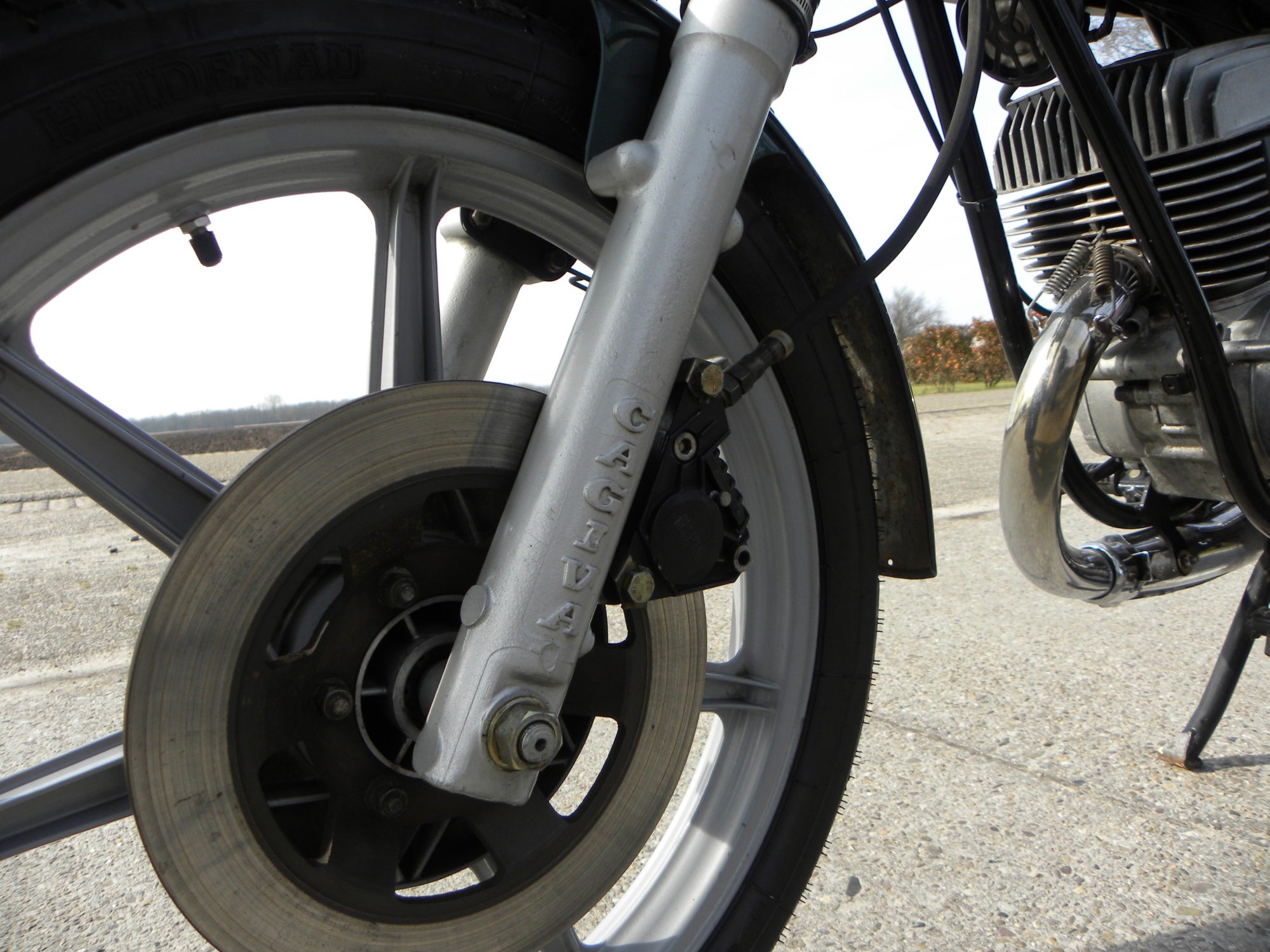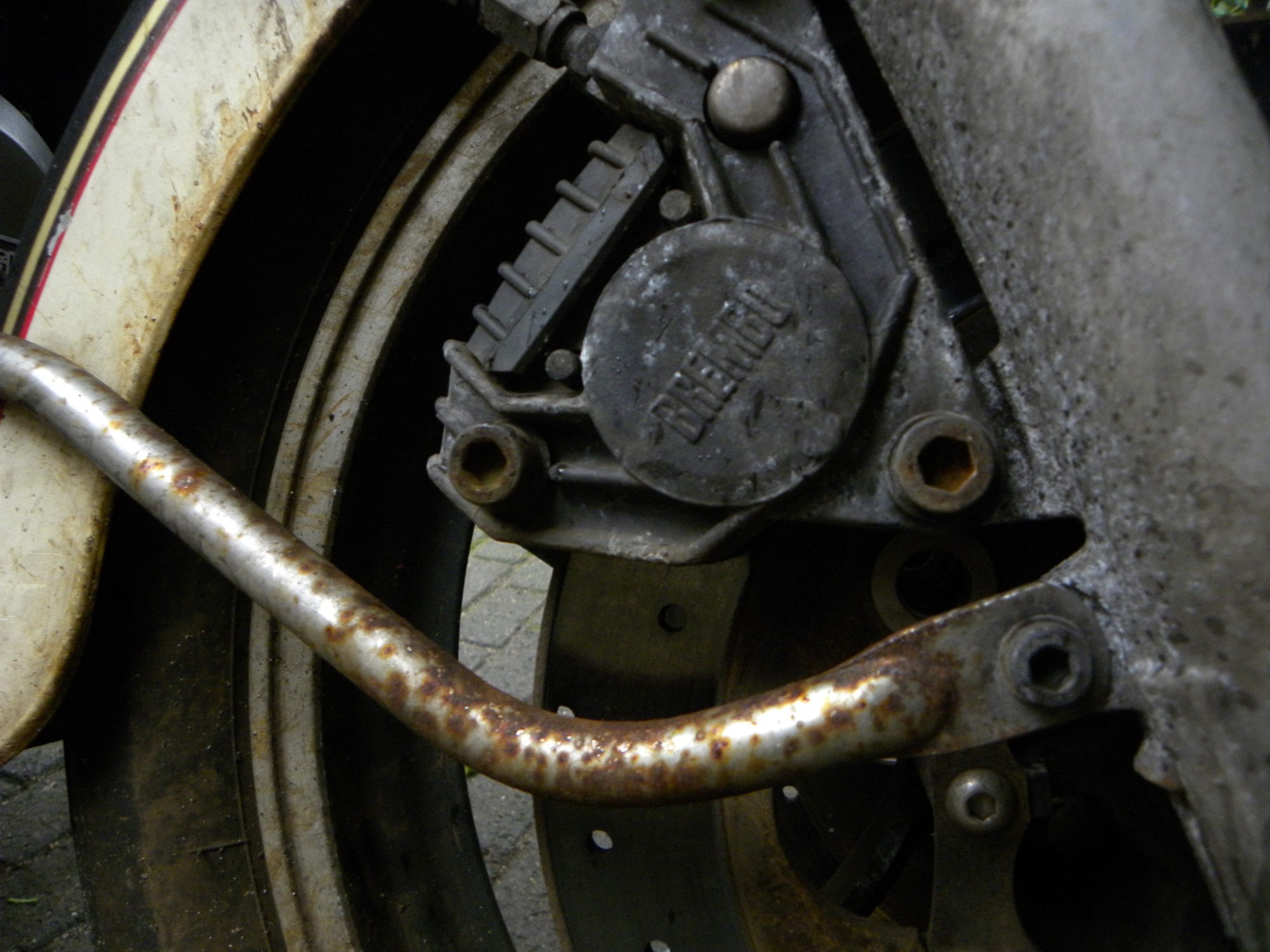Classic motorbikes and cars also have brakes. And that compared to their current offspring they are often endearing rather than effective? Ah: it used to be different times. It was less busy. The motorcycles and cars were not as fast. And the technology has not stood still.
Disc brakes are now the norm
Many modern toppers are electronically adjusted to 'only' 250 km / h. But their brakes - supported by the most clever electronic control cousins - are fully geared to that. Our classics may have increasingly disc brakes - the standard in the motorcycle world since 1969, the birth year of the Honda CB 750F -, but these are child's play compared to the current brakes. But usually they work satisfactorily. If they are properly maintained.
A matter of maintenance
That good maintenance naturally starts with the brake pads and the brake fluid (no 'brake fluid'). The proper functioning of the discs, pads, calipers and master cylinder depends on the lubricating properties of the brake fluid and its ability to protect the main components of the brake system from corrosion.
It is something that is often neglected: the brake fluid is quickly replenished without paying attention to the quality of the fluid in the circuit. However, it is essential for maintaining the entire braking system and ensuring good braking performance.
To change the brake fluid
The reaction time of the braking system decreases over time. Brake fluid ages fairly quickly, with some of its original properties lost. The main cause is that the liquid absorbs water vapor due to its highly hygroscopic nature. Evaporation of this moisture (which can also take place much earlier than upon reaching the boiling point stated on the packaging) creates vapor bubbles in the circuit. This increases the stroke of the brake pedal and the response of the braking system is dangerously reduced.
The replacement period
In principle, it is recommended to change the brake fluid at the intervals specified by the engine or car manufacturer. These can vary depending on the brake fluid used. The aging of the brake fluid is also quite rapid even with a low water absorption and therefore a 2 to 3 year change interval is generally recommended.
When symptoms such as vapor lock (the absorption of water makes the liquid boil faster) or other serious symptoms of accelerated aging occur, it is of course better to replace the brake fluid earlier.
First take a look at ...
Always check the brake fluid level before replacing the brake pads. Especially if they are not provided with wear indicators.
If necessary, remove excess brake fluid from the reservoir before pushing the pistons back into the calipers. This prevents flooding of the reservoir.
Never below 'minimum'
When the liquid in the reservoir is between the markings for the minimum (which it should never be near) and the maximum, the level is in principle good. However, when the level is at the minimum, it does not automatically mean that there is not enough liquid in the reservoir. On the contrary, this can also be due to worn brake discs and brake pads. As a result, there is more fluid in the circuit itself and less in the reservoir. It is therefore better to check the condition of the other braking system components before adding fluid.
Also consider the snakes
Also look at the brake hoses. Contrary to what often happens or does not happen, these are also parts that need to be replaced every 5-7 years.
Avoid spilling the brake fluid on the body, as this can damage the paint.
Do not keep the reservoir open longer than is necessary for checking and topping up the liquid: the liquid is highly hygroscopic as stated.
If possible, use a new vial or a vial opened only a short time before.
Brake fluid is naturally highly corrosive. Therefore, be extremely careful when handling it. Avoid contact with the skin, clothing and the body and mechanical parts of the car.
Also read:
- Encapsulated disc brakes
- Maintenance of the brakes
- Inhibit
- Dinitrol anti-rust treatment. Rust does not rest
- Panacea in the engine oil: PTFE and zinc






You don't want to know how many '80s and' 90s brikjes are still driving around with the factory-original brake hoses ...
The owners are then confused that after replacement by stainless steel braided Teflon brake lines, the braking force is suddenly so strong ...
Buy a handful of 50cc syringes from your pharmacy, and a piece of aquarium tubing from your pet store, great for topping up and venting. Fiddling with a liter bottle dot4 over a small filling opening is inconvenient… ..
Smart!
Nicely described of the 'infarct' in a brake hose.
Ever experienced with a VW Beetle but also with my R1150R.
The brake pressure was maintained after the brake was pressed or squeezed.
On the 1150, squeezing the brake again made the hose snap acutely. The corrosive brake fluid was sprayed throughout the garage. Fortunately, that happened in the garage when looking for a fault, because I had a very bad feeling about his braking behavior. If this had happened when braking a fast corner, this reaction would never have been written. Swallow!… ..
Typically a case of 'luck and misfortune!